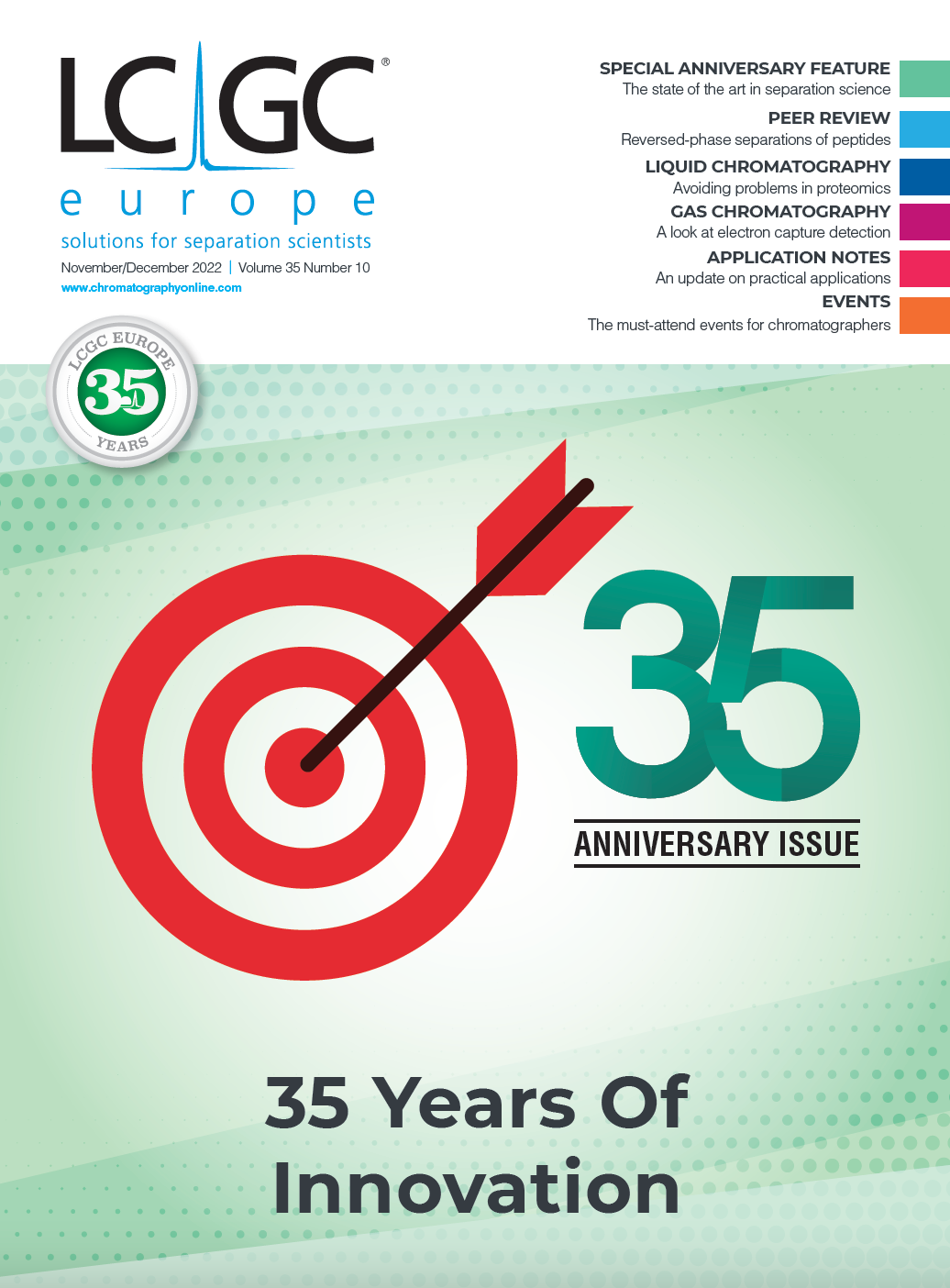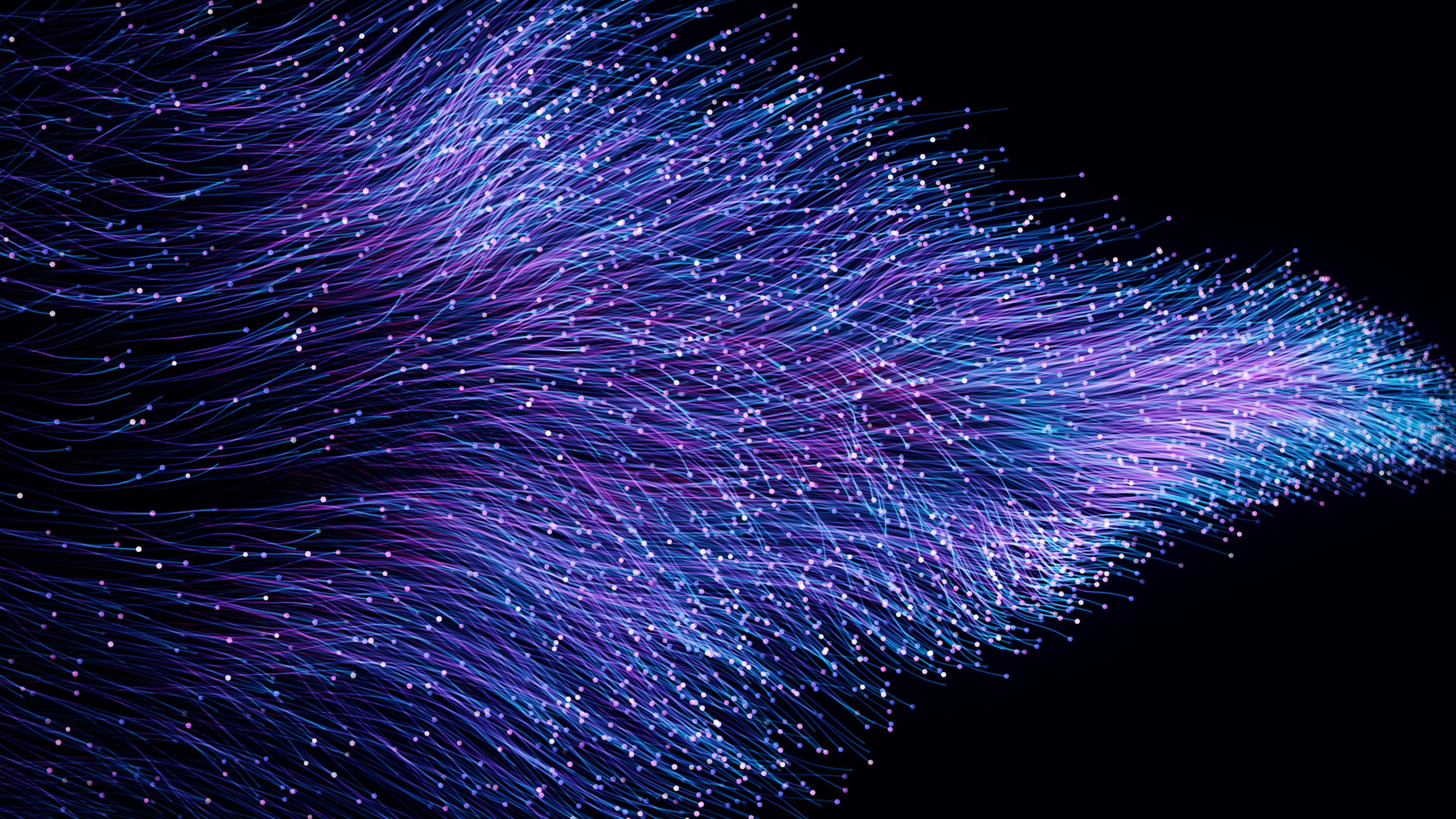Separation Science: The State of the Art: On the Contemporary Analysis of Protein Biopharmaceuticals
The publication of the first LCGC Europe issue back in 1987 followed a major milestone in biology, the FDA approval of the first therapeutic monoclonal antibody (mAb). This event, together with the commercialization of recombinant insulin a few years earlier, marked the birth of a new class of medicines that have drastically reshaped the pharmaceutical landscape. Protein biopharmaceuticals are currently being developed and approved at an explosive rate and have attracted great interest from both biotech and big pharma. Their success is driven by their efficacy in disease areas with a high unmet medical need, such as oncology, autoimmune, and infectious diseases. Antibodies reign supreme but protein biopharmaceuticals come in many flavours, all sharing one common denominator, an enormous therapeutic or prophylactic potential with a layer of immense structural complexity highly demanding towards analytics.
Privileged and from the first row, LCGC Europe witnessed how the analytical community rose to the challenge and sharpened the analytical toolbox. An inspiring creativity amongst peers throughout these three decades resulted in many innovative chromatographic and mass spectrometric tools for the in-depth study of these ever-more complex molecules.
Today these fascinating study objects are chromatographically resolved from top to bottom (protein, peptide, glycan, amino acid, monosaccharide) using a diverse set of separation principles, stand‑alone or in conjunction, tackling different physicochemical properties (size, charge, hydrophobicity, hydrophilicity, affinity). To cope with the slow chromatographic diffusion, sub-2-μm fully porous or sub‑3‑μm superficially porous particles are widely employed. Ultrahigh-performance liquid chromatography (UHPLC) instrumentation has been made available to successfully operate the latter particles. Biocompatible or bioinert systems have been developed preventing corrosion at high salt concentrations and analyte loss. Stationary phases have been coated with hydrophilic layers to block nonspecific interactions with hydrophobic proteins, such as antibody–drug conjugates, in size‑exclusion chromatography (SEC), or they have embedded charged functionalities to boost resolution in reversed-phase LC-based peptide mapping while using mass spectrometry (MS)-friendly formic acid (FA) instead of the ion-suppressant trifluoroacetic acid (TFA). Difluoroacetic acid (DFA) has been proposed as a hybrid between FA and TFA, offering decent chromatographic resolution and MS sensitivity. Wide-pore reversed‑phase LC particles capable of withstanding temperatures up to 90 °C allow separations of even the most challenging proteins, and the on/off elution mechanism enables fast measurements, with ultra-short columns largely circumventing the negative impact of temperature on protein integrity. The introduction of wide-pore particles in hydrophilic interaction liquid chromatography (HILIC) has extended the use of this technology beyond mapping of fluorescently labelled glycans and allows glycoforms to be resolved at the protein level. Novel antibody degrading enzymes, such as IdeS, have been released to facilitate the latter. Glycans themselves are nowadays enzymatically liberated and tagged in record times with fluorophores with high proton affinity that boost MS sensitivity by at least 50-fold over the golden standard 2-aminobenzamide (2-AB). Column hardware (frits, inner wall) has been prepared stainless-steel-free, allowing recovery of challenging analytes, such as phosphorylated glycans in HILIC and antibody dimers in SEC, and preventing on-column oxidation during peptide mapping. Multidimensional liquid chromatography has successfully been adopted by the biopharma industry to drastically increase resolution, to make first dimension separations compatible with MS and to obtain orthogonal information. The technology has even been stretched from two to five dimensions by incorporating (electro)chemical and enzymatic reactors and thereby maximizing information gathering in a fully automated manner. The quest for ever more dimensions has recently reopened a discussion within the chromatographic community on terminology.
Electrospray ionization (ESI)—invented a couple of months after the inauguration of LCGC Europe—has given wings to these molecular elephants, enabling successful mass analysis using high resolution time‑of‑flight (TOF) or orbital trap MS instruments equipped with various complementary fragmentation modes employed at top, middle, and bottom level. The coupling of historically incompatible chromatographic methods, such as SEC, ion exchange chromatography (IEC), hydrophobic interaction chromatography (HIC), or affinity chromatography, with MS has been made possible by two‑dimensional liquid chromatography (2D-LC), in which the second dimension enables desalting, or by direct MS hyphenation using volatile mobile phases. The latter sprays proteins under native conditions, contrasting with reversed-phase LC or HILIC–MS that operate under denaturing conditions, opening up perspectives towards studying protein-protein interactions and measuring previously unmeasurable proteins, as charged envelopes are shifted to higher m/z values where spatial resolution is at its maximum. Beyond primary structural characterization, native MS, ion mobility (IM), hydrogen-deuterium exchange (HDX), and cross-linking (XL) MS have been shown appealing for higher order structural analysis, epitope mapping, and to assess structure/function relationships. LC–MS has furthermore been applied to study protein biopharmaceuticals in complex matrices in support of pharmacokinetic/pharmacodynamic (PK/PD) programs and to identify and quantify host cell proteins (HCPs) at low ppm levels—measurements historically performed by ligand binding assays.
Throughout the years we have seen products become increasingly complex and witnessed analytics become more and more performant and robust. With that impressive analytical arsenal on the battlefield, we can rest assured that well-characterized and safe innovator and biosimilar products reach the patient. Yet there remains so much to be explored, and with all these opportunities on the shelf, it is highly rewarding as a scientist to be involved in biopharmaceutical analysis today. What will the next 35 years bring? Will nucleic acid-based medicines deliver on their promises? Will we separate our solutes on pillars instead of particles? Will we assess all structural attributes at once or will we keep on using dozens of methods and the most expensive instrumentation out there? Will we continue to handle these enormous amounts of data in a semi-automated manner or will we finally get all the information through one push of the– button? Curious to see how the field will be moulded in the next 35 years. Stay tuned…for a little longer.
Koen Sandra is CEO at RIC group (Kortrijk, Belgium) and visiting professor at Ghent University (Ghent, Belgium).
Pat Sandra is founder and advisor of the RIC group and emeritus professor of Ghent University.

Regulatory Deadlines and Supply Chain Challenges Take Center Stage in Nitrosamine Discussion
April 10th 2025During an LCGC International peer exchange, Aloka Srinivasan, Mayank Bhanti, and Amber Burch discussed the regulatory deadlines and supply chain challenges that come with nitrosamine analysis.
Polysorbate Quantification and Degradation Analysis via LC and Charged Aerosol Detection
April 9th 2025Scientists from ThermoFisher Scientific published a review article in the Journal of Chromatography A that provided an overview of HPLC analysis using charged aerosol detection can help with polysorbate quantification.






















